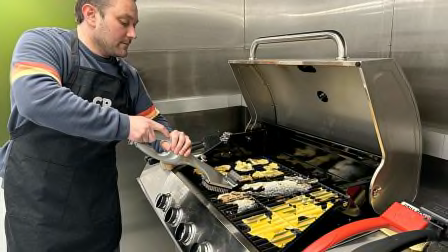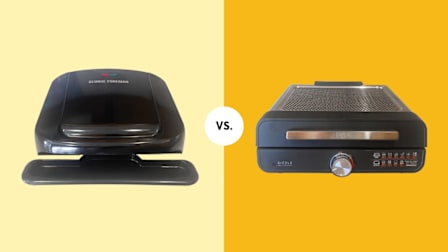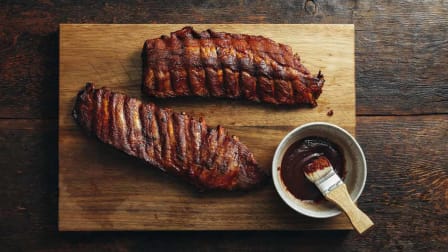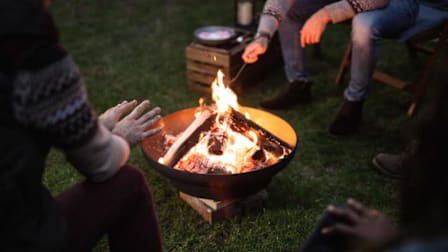Charcoal Grill Face-Off: Weber Kettle vs. Big Green Egg
Two iconic grills in a barbecue showdown
When you shop through retailer links on our site, we may earn affiliate commissions. 100% of the fees we collect are used to support our nonprofit mission. Learn more.
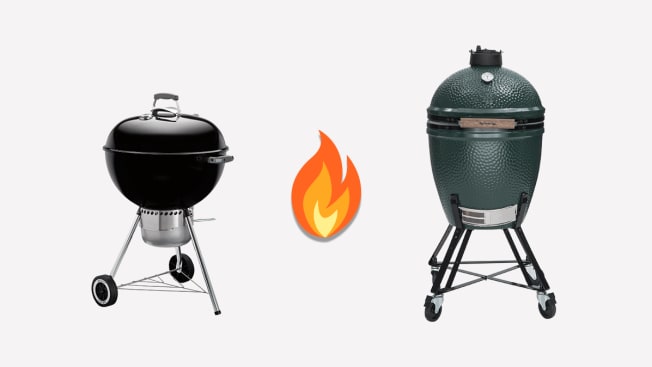
The Weber Original Kettle dots the backyard of millions of American homes, making it practically synonymous with summer grilling.
The Big Green Egg, which debuted in the 1970s, is a kamado grill that also burns charcoal but with a more airtight design and a bigger basin. The Egg has inspired a cultlike following and many copycat cookers.
Consumer Reports’ testers put them head to head to see how the two grills cook when pushed to their limits, and whether the Big Green Egg, which costs six times more than the Weber Kettle, could offer the kind of performance that would justify the price.
Vitals
Weber (18-inch): At 23 pounds, the molded metal Weber is lightweight and readily maneuverable, with a domed lid that sits securely, if not snugly, in place. Two dampers, one at the bottom and one in the lid, control airflow and as a result, temperature.
Big Green Egg (large): The Big Green Egg tips the scales at 165 pounds, thanks to cast ceramic walls an inch thick. Heatproof gaskets form a tight seal when the lid is closed, leaving the dampers as the only source of airflow and giving you superior control over cooking temperature.
Test-by-Test Results
High-Heat Cooking
To see how differences in cooking temperature would play out in the real world, we seared 1½-inch-thick sirloin steaks on both grills over 3 pounds of coal. As you would expect given the laws of physics, both fires burned at similar temperatures and produced similar steaks. When we filled the Egg to its capacity, however, things looked a little different.





























